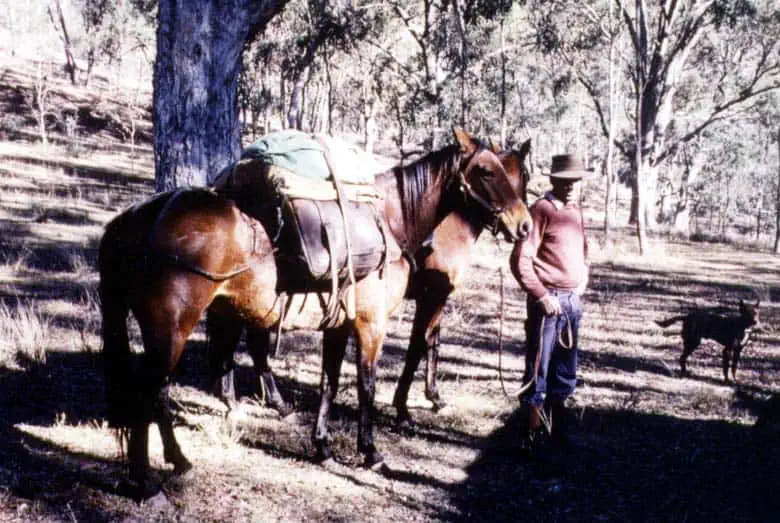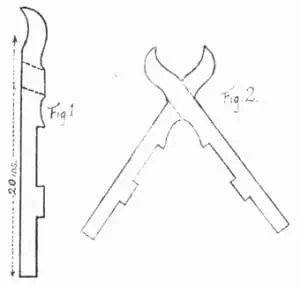Making a Packsaddle
Making a packsaddle: When thinking about pack saddles, you have three options: Buy a new one, buy a used one, or create a packsaddle. Your choice will depend on how much packing you’d like to do in the future.
Sawbuck Pack Saddle
Directions here are for making a classic Sawbuck Pack Saddle. First, ask woodworkers around your area about suitable local timber, and use only high-quality wood for the tree, without knots or blemishes. Make a template (thin metal sheet or cardboard) and cut four pieces of wood with the grain running lengthwise and about 2 inches x 1 x 20, as shown in Figure 1. Please make sure to sand each piece smooth. Mortise each pair, gluing together with marine grade glue as in Figure 2, then countersink and fix with four screws per pair.

Make the sidebar covers from wool or heavy canvas. Figure 4, leaving enough overlap to fix the sidebar boards. Insert a high resilient/density foam (several layers of a backpacker sleeping mat are ideal) into the sidebar covers. The covers can be stapled to the timber and finished off by fixing a strip of leather over the line of staples.
Pack Rugs and Pads
This completes your task of making a packsaddle, but you should always use a pack pad under your saddle. A pack pad is bigger and thicker than an ordinary riding saddle pad. Your pack animal is carrying your equipment, and you need plenty of padding for the pack saddle to protect your pack animal. Large quilted or foam pack pads will ensure your pack horse is comfortable when lugging your stores and belongings around the countryside.

You can also make your panniers from various hardy materials: rawhide, wood, aluminium, fibreglass, or canvas. It is a good idea to have covers over the panniers to provide waterproofing. Remember, weighing packs is also a good idea to balance the load/pannier on each side of the pack animal. If a load is only a few pounds heavier on one side, it will eventually cause the pack saddle to slip to one side. It is causing a wreck and distress to man and beast.


